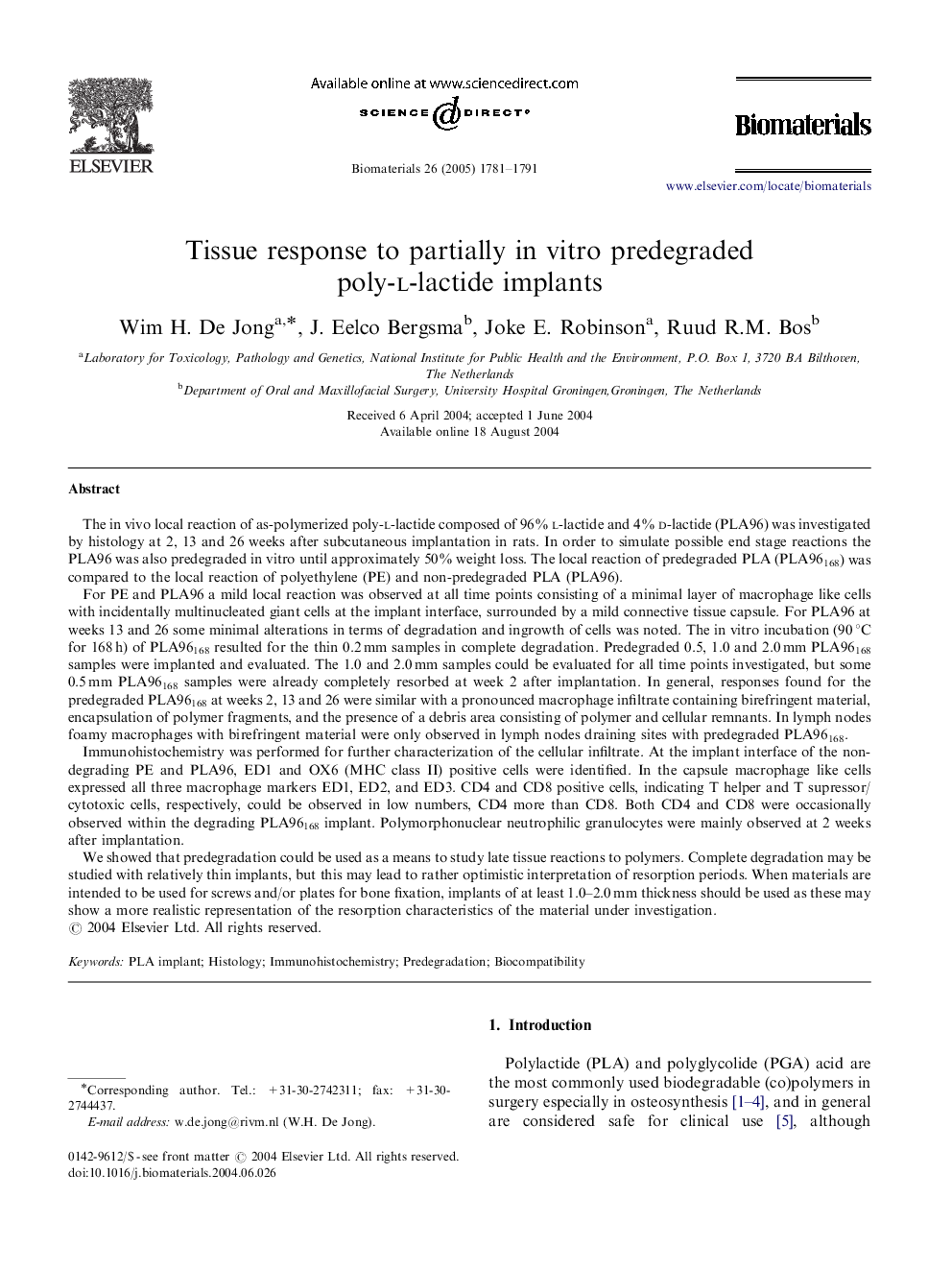| کد مقاله | کد نشریه | سال انتشار | مقاله انگلیسی | نسخه تمام متن |
|---|---|---|---|---|
| 12370 | 791 | 2005 | 11 صفحه PDF | دانلود رایگان |

The in vivo local reaction of as-polymerized poly-L-lactide composed of 96% L-lactide and 4% D-lactide (PLA96) was investigated by histology at 2, 13 and 26 weeks after subcutaneous implantation in rats. In order to simulate possible end stage reactions the PLA96 was also predegraded in vitro until approximately 50% weight loss. The local reaction of predegraded PLA (PLA96168) was compared to the local reaction of polyethylene (PE) and non-predegraded PLA (PLA96).For PE and PLA96 a mild local reaction was observed at all time points consisting of a minimal layer of macrophage like cells with incidentally multinucleated giant cells at the implant interface, surrounded by a mild connective tissue capsule. For PLA96 at weeks 13 and 26 some minimal alterations in terms of degradation and ingrowth of cells was noted. The in vitro incubation (90 °C for 168 h) of PLA96168 resulted for the thin 0.2 mm samples in complete degradation. Predegraded 0.5, 1.0 and 2.0 mm PLA96168 samples were implanted and evaluated. The 1.0 and 2.0 mm samples could be evaluated for all time points investigated, but some 0.5 mm PLA96168 samples were already completely resorbed at week 2 after implantation. In general, responses found for the predegraded PLA96168 at weeks 2, 13 and 26 were similar with a pronounced macrophage infiltrate containing birefringent material, encapsulation of polymer fragments, and the presence of a debris area consisting of polymer and cellular remnants. In lymph nodes foamy macrophages with birefringent material were only observed in lymph nodes draining sites with predegraded PLA96168.Immunohistochemistry was performed for further characterization of the cellular infiltrate. At the implant interface of the non-degrading PE and PLA96, ED1 and OX6 (MHC class II) positive cells were identified. In the capsule macrophage like cells expressed all three macrophage markers ED1, ED2, and ED3. CD4 and CD8 positive cells, indicating T helper and T supressor/cytotoxic cells, respectively, could be observed in low numbers, CD4 more than CD8. Both CD4 and CD8 were occasionally observed within the degrading PLA96168 implant. Polymorphonuclear neutrophilic granulocytes were mainly observed at 2 weeks after implantation.We showed that predegradation could be used as a means to study late tissue reactions to polymers. Complete degradation may be studied with relatively thin implants, but this may lead to rather optimistic interpretation of resorption periods. When materials are intended to be used for screws and/or plates for bone fixation, implants of at least 1.0–2.0 mm thickness should be used as these may show a more realistic representation of the resorption characteristics of the material under investigation.
Journal: Biomaterials - Volume 26, Issue 14, May 2005, Pages 1781–1791